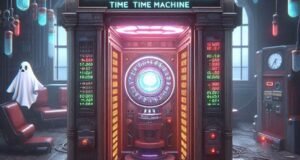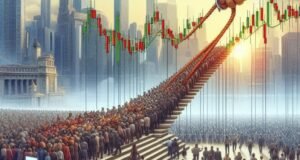Traders are shouting prices, deals are flying, and the crowd is thick. The movement gives the illusion of abundance—but beneath the noise, only a few are actually buying or selling. Now imagine a clever magician among them, orchestrating fake foot traffic, moving mannequins disguised as buyers, and whispering bids just loud enough to attract real customers. Suddenly, the illusion becomes real—others join in, prices stabilize, and trade begins in earnest.

This is the world of Synthetic Liquidity Provision, the magician behind the curtain of modern prop trading, especially in thin or volatile markets.
In the fast-paced ecosystem of proprietary trading, where firms deploy their own capital to make profits using ultra-sophisticated strategies, liquidity is king. Without liquidity, even the best trade setup can crumble—orders slip, spreads widen, execution becomes a nightmare, and risk spirals out of control. Particularly in niche assets, small-cap stocks, emerging markets, or during low-volume trading hours, traders often find themselves standing in a ghost town.

Enter synthetic liquidity—a finely-tuned illusion crafted by bots and algorithms that simulate market depth.
Imagine a prop trading firm trying to enter a position in a thinly traded token or illiquid equity. There are few natural counterparties, and any significant market order could move the price unfavorably. That’s where synthetic liquidity algorithms step in, like actors on a digital stage. They place intelligent limit orders on both sides of the book, offering the appearance of tight spreads and robust volume. They’re not real buyers or sellers in the traditional sense—they’re liquidity architects.
These bots act as algorithmic market makers, dancing back and forth, responding to volatility, volume spikes, and order flow imbalances. Their job isn’t just to transact—but to signal confidence, to create a rhythm that draws others in. Like a street performer attracting a crowd, their presence makes others stop, assess, and eventually act.
But this isn’t manipulation—it’s facilitation. Because when real participants begin trading around this synthetic liquidity, the illusion starts to transform into true market activity.
In the world of prop trading, especially in high-frequency and quant environments, this capability is a strategic edge. Firms often use synthetic liquidity not just to enter or exit positions quietly but to control the narrative of the market microstructure. They can use it to manage slippage, reduce execution delays, and test order impact sensitivity—all while shaping the flow of the market in their favor.
It’s a bit like building a bridge across a chasm that no one dares to cross. The synthetic liquidity is the scaffolding. Once it’s there, others start walking, and soon enough, a real bridge forms beneath their feet.
This practice also supports broader market health. Without synthetic liquidity, certain markets would remain deserted. No trader wants to be the first to jump into an empty pool. But with prop trading bots simulating activity, the pool looks more inviting—and real participants begin to dive in.
Of course, synthetic liquidity must be wielded responsibly. If done poorly, it creates false signals or fragile market conditions that collapse under real pressure. But when executed with finesse, it becomes a silent guardian of stability—minimizing slippage, absorbing shocks, and keeping the engine of prop trading humming smoothly even in barren landscapes.
In a digital age where perception often shapes reality, Synthetic Liquidity Provision ensures that even in the quietest corners of the financial world, there’s always the hum of opportunity.




